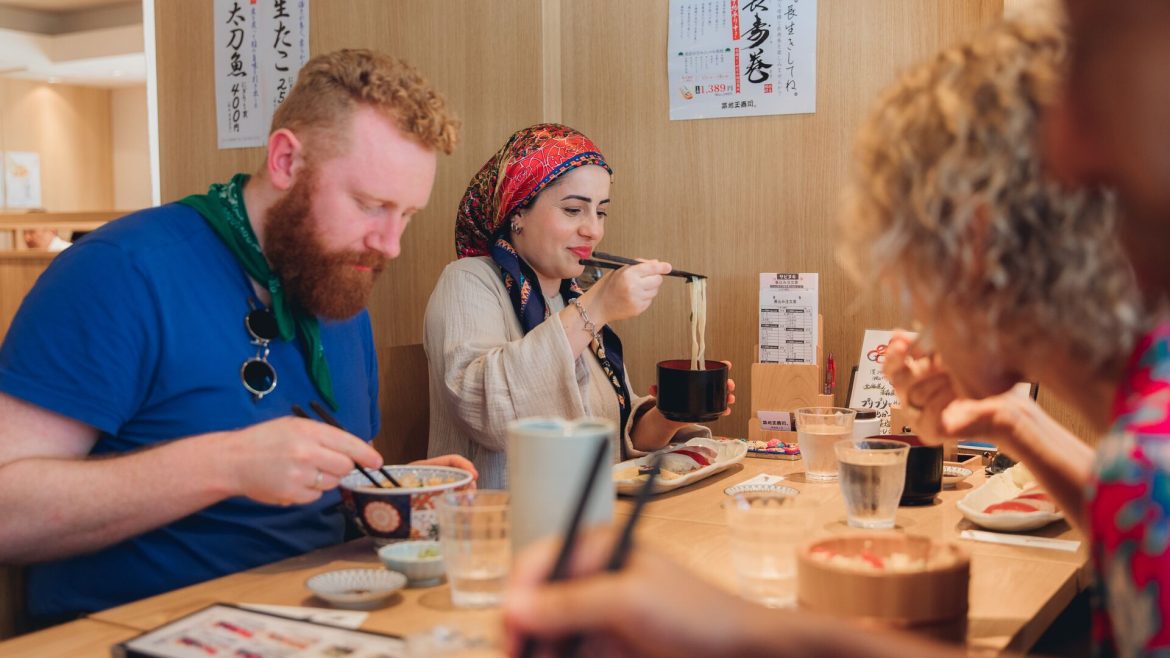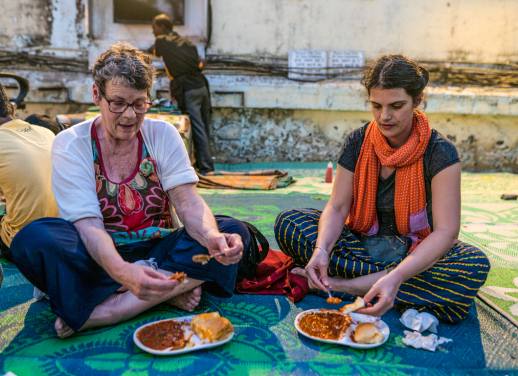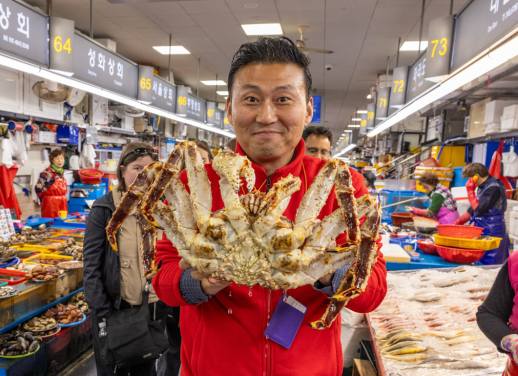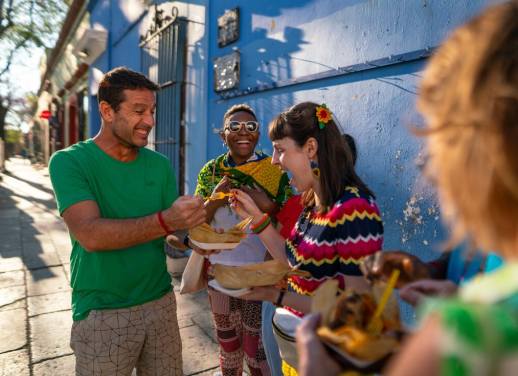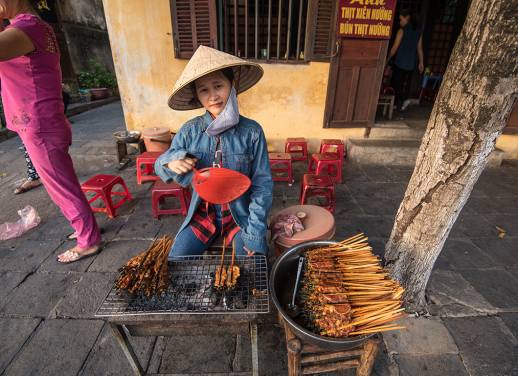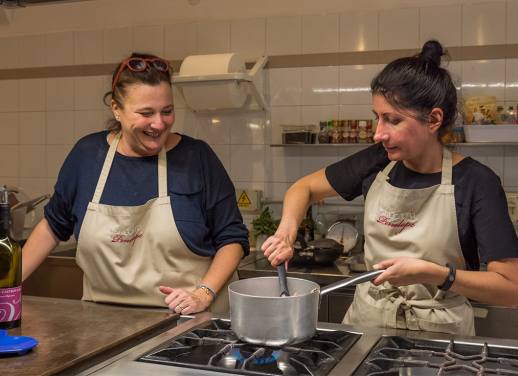Dining in different countries involves learning the local etiquette – at least if you want to dodge any cultural faux pas.
Trying the local cuisine is one of the best parts of travelling. But what’s acceptable at the dinner table in one country may not be the case in another. We all grow up with different table manners, but sometimes when you travel, the etiquette you’re used to may be flipped on its head faster than you can say, ‘No elbows on the table!’
From eating only with your right hand in India to slurping your noodles in Japan, here are some dining etiquette practices you may encounter on your travels.
1. Don’t eat with your left hand in India
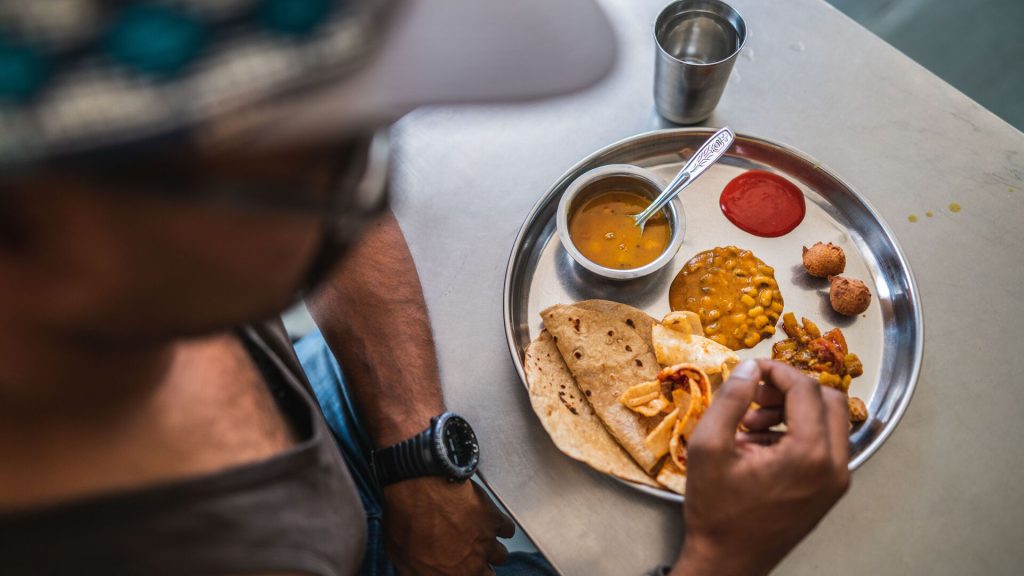
Eating with your hands is the norm in many parts of India. Locals even say it makes the food taste better. However, you should only ever use your right hand – even if you’re a leftie. The left hand is traditionally reserved for ‘unsavoury’ activities like wiping yourself after using the bathroom, so using it to eat is considered unclean. You may get away with using your left hand in urban or touristy areas, but you’ll probably get a funny look or two in more remote or rural places.
Explore the enchanting northern state of Rajasthan
2. Don’t drink a milky coffee after 11 am in Italy
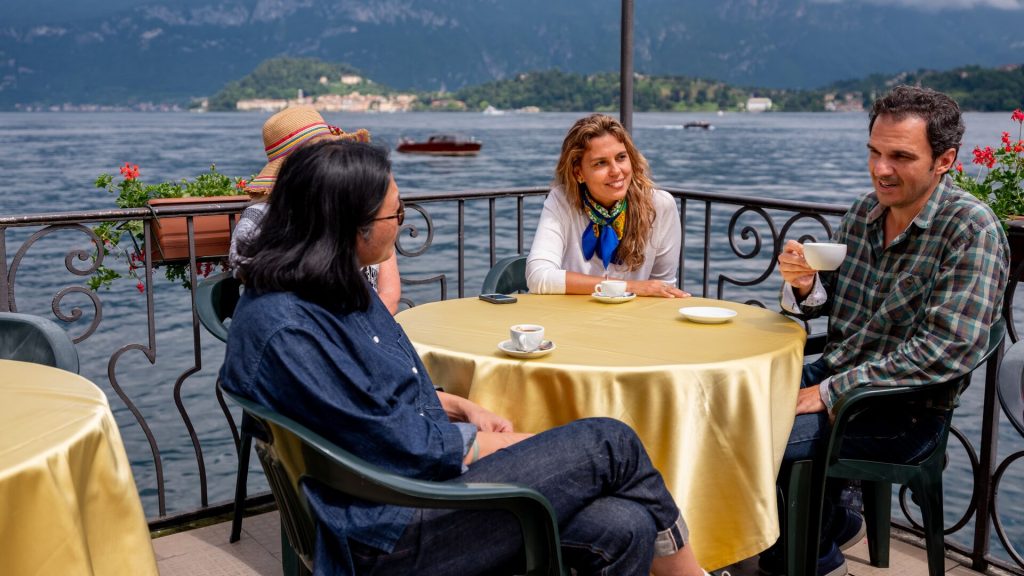
If you order a cappuccino in Italy after 11 am or – heaven forbid – after lunch or dinner, be prepared to be met with a look of disdain, or maybe even an outright refusal from your waiter. There’s an unwritten rule in Italy that cappuccinos should only be consumed at breakfast. Italians think milk is heavy and filling and believe drinking it later in the day can disrupt digestion.
But what about if you overdo the carbs and fancy (read: need) a post-lunch boost? Do like the Italians and order “Un caffè, per favore”. You’ll be served a small but caffeine-packed shot of espresso – most locals drink it with a teaspoon of sugar. Or, if you have room, why not treat yourself to an indulgent affogato, a dessert of gelato ‘drowned’ in espresso (affogato means ‘drowned in Italian).
Another thing to note is that a cappuccino in Italy doesn’t come dusted with chocolate powder; it’s more like a flat white. Oh, and don’t ask for a ‘latte’ unless you want a glass of milk – ask for a “caffe latte”.
Uncover the secrets of Italian cuisine on a Real Food Adventure
3. Don’t cut pasta in Italy
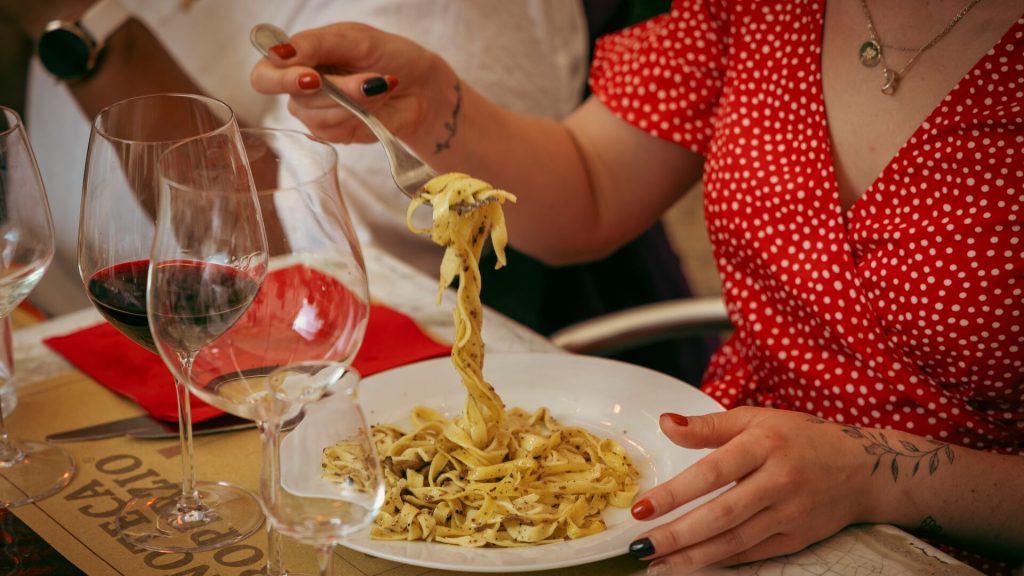
Never, ever, cut your pasta with a knife in Italy. It’s considered sacrilege. Okay, cutting tagliatelle or spaghetti might be more practical than twirling it around your fork, but to do so would mean you miss the whole point of Italian cuisine: to take your time and savour each bite.
If you’d prefer a bite-size pasta, order a rigatoni or orecchiette dish – you’ll find plenty of options on the menu.
The same rule applies to cooking pasta at home. Breaking pasta in half before adding it to a pan of boiling water is a severe culinary sin in the eyes of an Italian.
4. Burping at the dinner table is acceptable in China
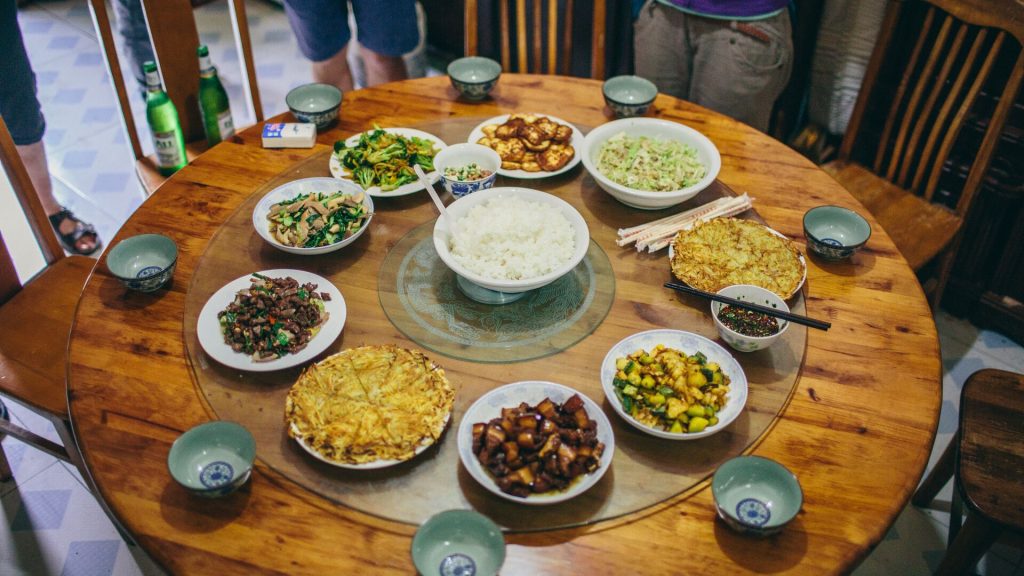
Burping (gently) is seen as a sign of gratitude to the chef in China. While you don’t have to participate if you don’t want to, you should remain open-minded to hearing a burp or two at the dining table.
Experience the breadth of cultures, flavours and landscapes of China
5. Feel free to slurp your noodles in Japan
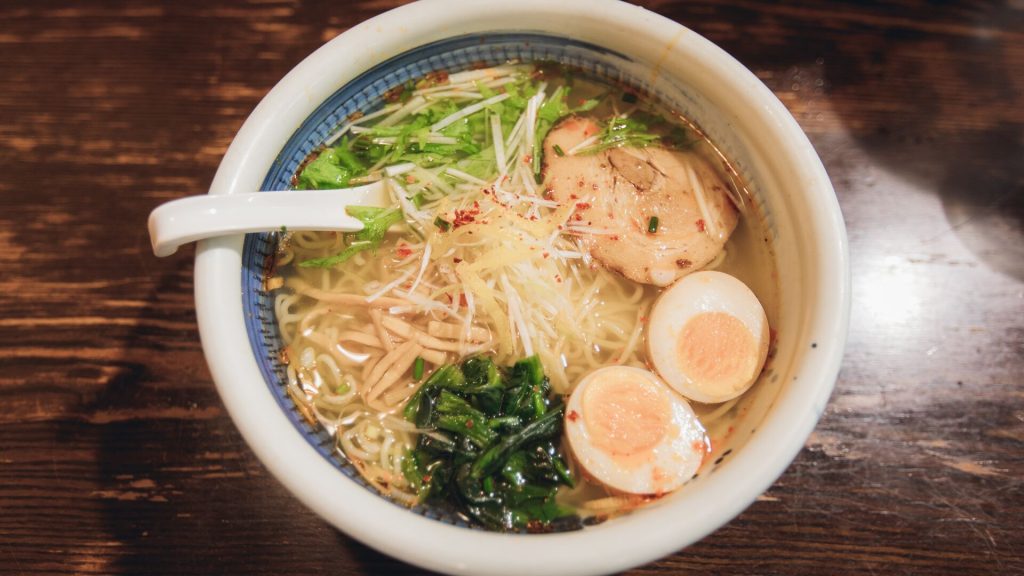
Have you ever been told it’s rude to slurp? Not in Japan. Slurping noodles is seen as a compliment to the cook. But just because slurping is fine in ramen joints doesn’t mean you should do it in other restaurant settings – unless you want to be side eyed by your neighbours.
Uncover the rich cuisine, culture and history of Japan
6. Don’t stick chopsticks in your rice in Japan
A bowl of rice may seem like a great place to rest your chopsticks while you take a sip of sake or go for seconds of the karaage chicken, but it’s a big no-no. In Japanese culture, sticking chopsticks in rice resembles a Japanese custom known as ‘tate-bashi’, a type of offering reserved for Buddhist and Shinto funerals. Doing it at a dinner table would be considered a bad omen. Instead, rest your chopsticks over your bowl or place them in the chopstick holder.
7. Don’t leave without tipping in the USA
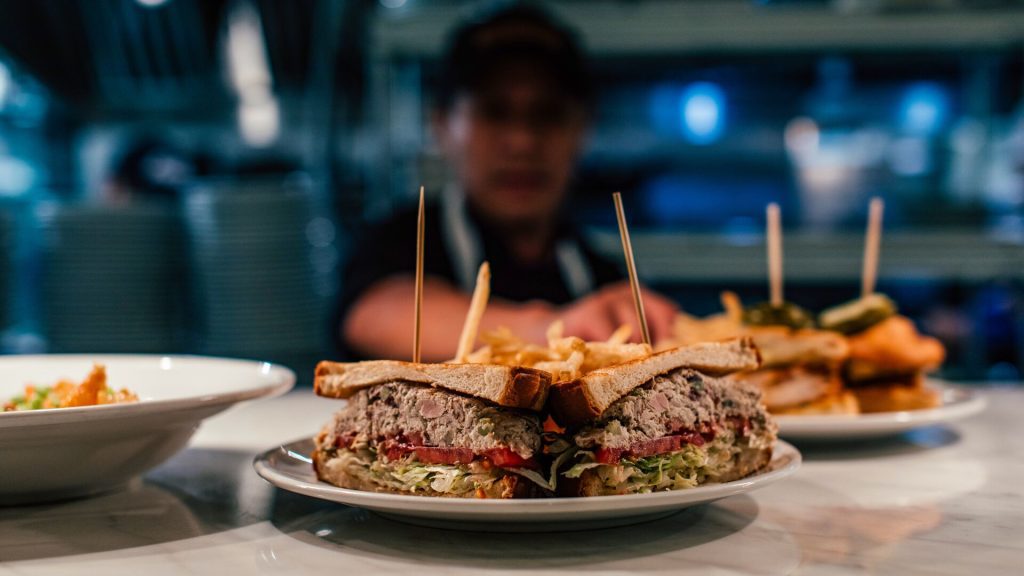
Leaving a sit-down restaurant without tipping in the United States is unheard of. You’ll often find that waiters go the extra mile to ensure you’re well looked after, and if you exit without leaving a gratuity, you could be seriously impacting their wages.
Hospitality and service staff in the States rely on tips as they’re usually paid below the federal minimum wage, which is very low compared to other countries like Australia. The accepted amount to tip is 15 to 20 per cent of the bill. Some establishments add a gratuity to the bill, in which case you’re not required to tip extra.
In bars, it’s standard to tip USD $1 per drink, so ensure you have some loose bills in your purse.
Hit the best of the West on a USA road trip
8. Don’t lick your fingers in Ethiopia

Sharing is at the heart of Ethiopian cuisine. Most dishes are brought out on injera, a large, spongy flatbread which also serves as cutlery. The platter is placed in the middle of the table so that everyone can tear off pieces of bread and use it to pick up colourful morsels of stews, curries and salads. Additionally, like in India, eating should only be done with the right hand.
It can take a little while to master the art of scooping food with injera, so be prepared to get messy. However, as tempting as it may be, don’t lick your fingers during the meal as it’s considered rude. Hold out till the end when you wash your hands.
There can be a lot to navigate when you travel to a new country for the first time. When you travel with Intrepid, you’ll have an expert local leader by your side to help you with the do’s and don’ts so you can get a true taste of the local culture.
Check out Intrepid’s range of small group adventures for foodies

